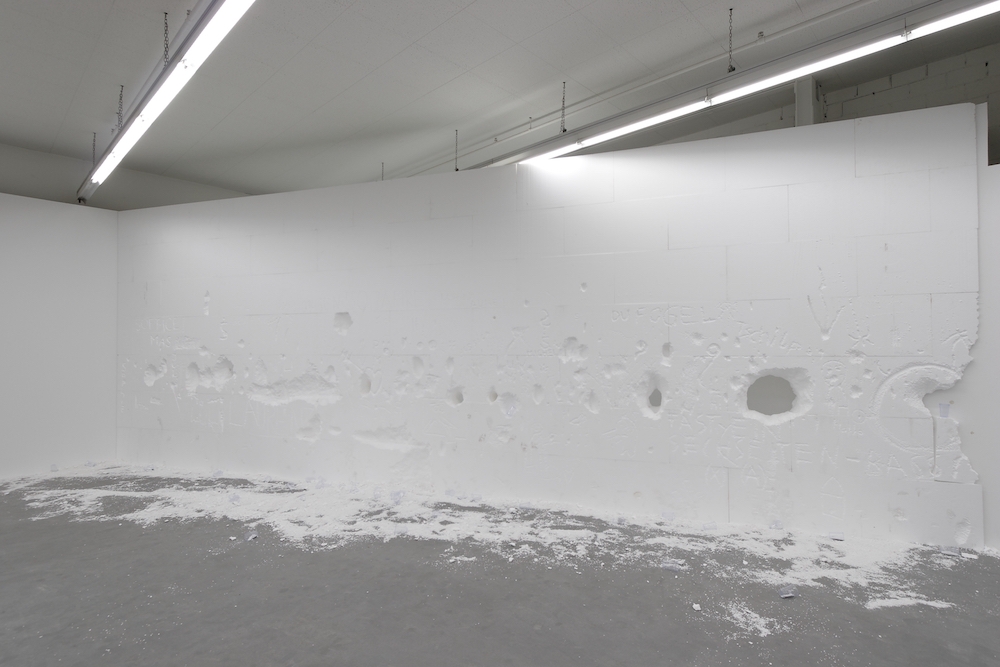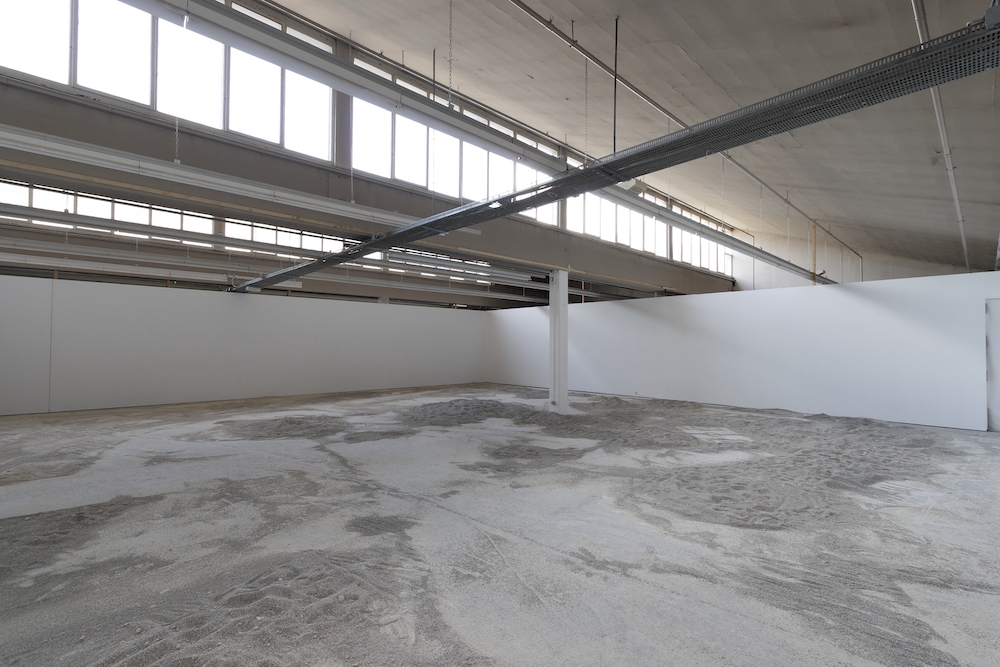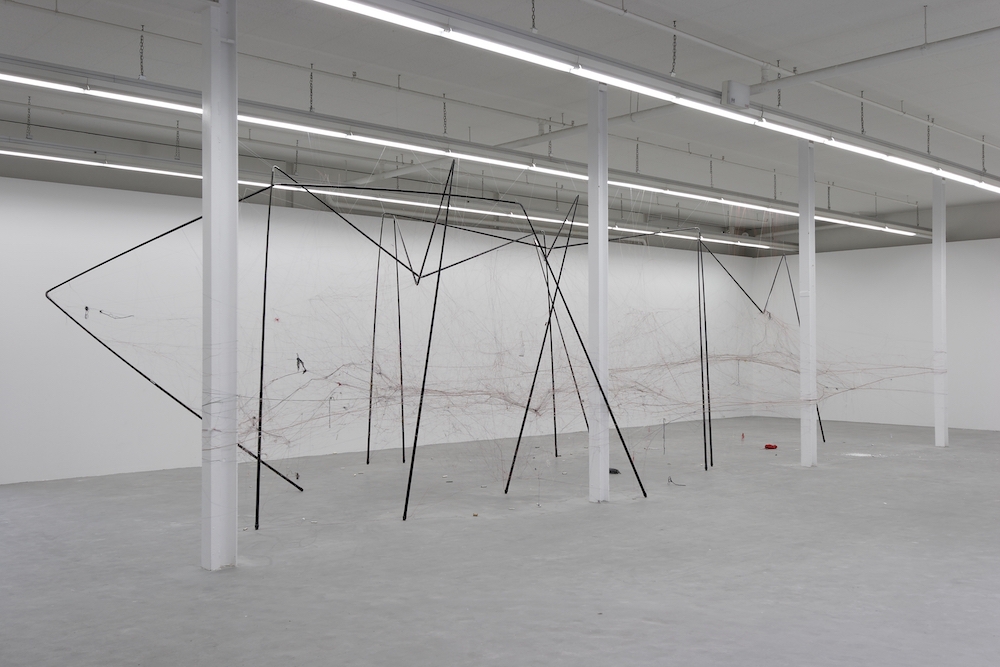Martin Walde
Humming
6.5. —
2.7.2006



For the first time in Switzerland, Kunsthaus Baselland puts on a large-scale solo show devoted to Austrian artist Martin Walde. The artist, who rose to international fame with his participation in documenta X, will present two existing works previously created, as well as a series of new works created specifically for the show.
Sleeping Beauty, seen for the first time in 2003, is a sculpture-like installation made of tangled wire, featuring a mobile telephone dangling from the ceiling; its function is to ‘honor a promise that has never been made’. The phone, whose number has been publicized by means of invitation cards, on the Internet, and by word of mouth, may start ringing any time — people who don’t know each other yet may therefore have a chat and stop being strangers. Their interaction is encouraged by the setting of the artwork, comprising ‘roses’ made of cheese wax attached to the tangled web of wiring which, when touched, may change their form or even whither because of the warmth of viewers’ hands.
Just like in Sleeping Beauty, Martin Walde creates spaces with his new works that are accessible to viewers and may trigger a variety of processes, depending on their cultural origins or personal preferences. One of his new works, for example, essentially consists of an encompassing Styrofoam wall placed such that what is behind it is felt quite acutely. A water dispenser including plastic cups is positioned in the front and encourages viewers to take a sip. Some of the empty cups are filled with Styrofoam spheres scratched from the wall. These evident traces of manual interventions in the Styrofoam surface are designed to arouse the viewers’ curiosity, but they are also targeted at their haptic perception and even compulsory acts: Haven’t we all experienced this overwhelming urge to touch, squeeze, pull out, and take apart certain objects or materials? During the exhibition visitors are likely to dig their fingers into the wall, creating a hole and exposing the space behind it.
Another work by Martin Walde spreads across the floor. Half of it is made of white, the other half of black sand. Various receptacles encourage Zen-like drawing which may very quickly degenerate into aggressive destruction. Another new work is reminiscent of a big spider structure whose body may be woven by visitors by using a variety of threads and yarns. The production process will not be concluded until the end of the exhibition. It is ultimately the visitors of the show that will design its form and colors.
Then there is a work that alludes to one of Walde’s older works, The Key. But unlike the original version, the current one doesn’t include a space accessible by visitors in which they can lock themselves up; rather, there are many keys scattered across the floor in front of a closed door. Behind it, we can hear a cat meow. Any attempt by the visitors to set free this allegedly imprisoned cat will fail as not a single one of the keys fits into the keyhole. Martin Walde initiates interactions between the work and its viewers which may be subsumed under the heading of ‘performative interactions’. These processes are devoid of any established rules or instructions. The structures of the artist’s works sound out the potential inherent in the materials and objects used and push the limits of conventional institutional practices and reception patterns. Martin Walde “charges objects with optionality”.
“Walde’s notion of form is never static, but is questioned, investigated, presented, and made available as a marginal phenomenon, including a large variety of specific institutional, imaginary, and emotional marginal conditions. […] His works bring about a concrete, formalized, and quite open ‘conversation’ with the public, undermining — in an original as well as sophisticated manner — the tried-and-tested method of viewing art merely as a passive consumer.” (Jens Asthoff)
Text by Sabine Schaschl